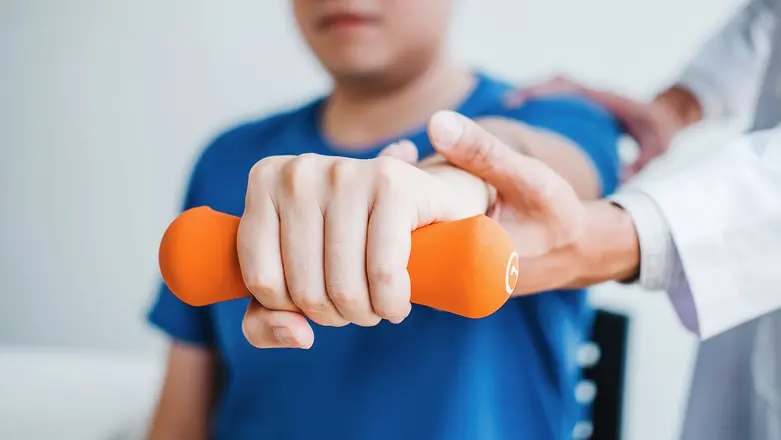-
-
Featured Care Areas

Common hand conditions
Hands are important for daily activities. They enable you to perform both broad and fine motor movements, be it picking up large items, completing delicate tasks, using a range of tools, or controlling forceful grip.
Hands are prone to a number of common injuries caused by:
- Everyday wear and tear
- Sports or recreational activities
- Accidental falls
Most minor injuries like cuts and bruises heal on their own, but certain injuries may lead to serious conditions that affect hand function in the long run. Learn more about the common conditions that affect the hand, as well as the orthopaedic treatments and hand surgeries available at Gleneagles Hospital.
Collapse All
Arthritis is an inflammation of the joints that causes pain and swelling. Finger and wrist arthritis are common causes of hand pain, which tend to affect older people or individuals with previous hand injuries.
Common symptoms of arthritis include:
- Reduced movement
- Misshapen, weakened, swollen, or tender joints
- Pain, grinding, clicking or cracking sensations in the affected joint
Learn more about arthritis and our treatments.
A fracture is a cracked or broken bone that occurs when the force exerted on a bone is stronger than the bone itself.
Hand fractures affect the bones that make up the hand, such as finger and wrist bones.
Symptoms of hand fractures include:
- Swelling
- Pain and tenderness
- Deformity at the area of the fracture
- Limited movement
Learn more about hand fractures and our treatments.
Carpal tunnel syndrome is a condition where the median nerve, which runs the length of the arm and through the carpal tunnel in the wrist, becomes compressed.
The median nerve controls movement and feeling in all the fingers except the little finger. When it gets compressed, it can lead to numbness, discomfort or pain. Left untreated, these symptoms can worsen.
Learn more about carpal tunnel syndrome and our treatments.
Trigger finger is a condition where a finger becomes locked in a bent position. It causes pain or stiffness when you try to straighten or bend the finger.
You may also experience:
- A painful snapping or popping sensation upon bending and straightening the finger
- A tender bump on the palm of the hand, near the base of the affected finger. You may also feel tightness there.
- An aching sensation
If not treated, the affected finger may become permanently stuck in a certain position, leading to difficulty performing everyday tasks.
Learn more about trigger finger and our treatments.
De Quervain's tenosynovitis is a painful wrist condition affecting the tendons on the thumb side of your wrist. It is usually caused by chronic overuse of the wrist with daily repetitive movements. Repetitive movements create excessive friction in the tendons, leading to inflammation.
Common symptoms include:
- Pain over the wrist joint near the base of the thumb
- Pain after increased activity involving the wrist and hand. The pain may begin as an aching sensation and progress to sharp pain and swelling of the wrist.
Learn more about De Quervain's tenosynovitis and our treatments.
Osteoporosis is a condition in which your bone tissues break down faster than your body can rebuild them, leading to brittle and weak bones. Osteoporosis increases the risk of fractures in your hand or wrist.
It is hard to detect bone loss in the early stages. If your bones weaken further, you may notice:
- Your height decreasing
- Your posture becoming hunched
- A fracture from a mild impact, such as falling, bending over or even coughing
Learn more about osteoporosis and our treatments.
What is Dupuytren's contracture?
Dupuytren's contracture is a hand deformity that develops over years, resulting in a bent position for affected fingers.
The condition usually begins as a thickening of the skin on the palm. Over time, the skin may appear dimpled, and a firm lump of tissue may form on the palm.
In its later stages, cords of tissue formed under the skin tighten, resulting in the fingers being pulled towards the palm. Due to the bent fingers, certain hand functions may be affected.
What causes Dupuytren's contracture?
The exact cause of Dupuytren's contracture is unknown. You may be at higher risk if you:
- Are male
- Are diabetic
- Are above 50
- Have close family members with the condition
- Smoke and drink
How is Dupuytren's contracture treated?
Your doctor will perform a medical examination to assess your condition. Treatment may involve a procedure to remove or break apart the cords that are pulling the fingers towards the palm.
Speak to our hand surgeons to start treatment for Dupuytren's contracture.
This page has been reviewed by our medical content reviewers.



